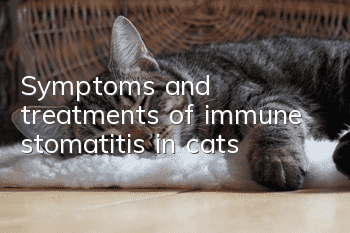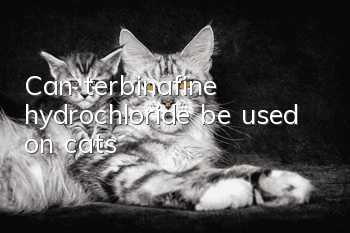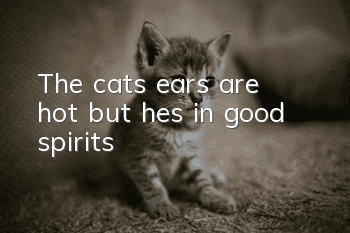Symptoms and treatments of immune stomatitis in cats

Cat immune stomatitis is also known as eosinophilic granuloma, plasma cell stomatitis, lymphocytic stomatitis, feline leukemia viral stomatitis, bacterial antigen allergic stomatitis, etc. It refers to a chronic, proliferative or ulcerative stomatitis that starts in the mucosa behind the molars and can spread to the entire gums, laryngeal mucosa and sublingual mucosa.
1. Symptoms
1. Sick cats may have bad breath, drooling, secretions or bleeding from the corners of the mouth. They may tilt their heads, scratch their cheeks with their front paws, have sudden nausea or even scream strangely when eating.
2. In severe cases, the mouth cannot be closed or the tongue is exposed due to excessive growth in the oral cavity.
3. Loss of appetite and loss of appetite are related to the cat’s individual pain tolerance and have little to do with the degree of oral lesions. When you open the mouth of the affected cat, you will observe: mucosal redness, swelling, hyperplasia, defects, ulcers, etc. between the last molars of the upper and lower jaws on one or both sides. This symptom is specific. If there are no such symptoms, the disease cannot be diagnosed! In severe cases, redness, swelling and hyperplasia of the gums, redness, swelling and hyperplasia of the tongue base and throat mucosa can be seen.
2. Causes
Caused by various pathophysiological changes caused by a variety of causes
3. Treatment
1.Drug treatment
Antibiotic treatment is necessary.
Immunosuppressants: dexamethasone, prednisolone injection, methylprednisolone, methylprednisolone acetate, megestrol, cyclosporine A, azathioprine, benzene ), gold thioglucose (glucosinolate gold), methotrexate (methotrexate), fluorouracil, tegafur/uracil (eufludine, euflutide), tripterygium glycosides.
2. Surgical treatment
For the removal and cleaning of granulations or ulcers in oral lesions, surgical methods include ordinary surgical resection plus electrocoagulation or cautery to stop bleeding, electrosurgical resection, laser resection, etc. They all achieve satisfactory clinical results in the short term, but if subsequent immunosuppressive treatment is unsuccessful, the original lesions will quickly return to their preoperative state, regardless of the surgical method. It can be seen that this method only has clinical significance when there are still large growths in the lesion after immune shock treatment and it affects eating.
Molar extraction or removal of all teeth can first solve the allergic reaction of the oral mucosa caused by bacterial antigens attached to the teeth and calculus. Secondly, the disappearance of the teeth can greatly shorten the time that food stays in the mouth when the cat eats, and reduce the amount of food. The chances of residues existing in the mouth are reduced, thereby reducing the chance of allergic reactions between allergens in food and the oral mucosa.
Cat stomatitis is related to diet and health, and cannot be ignored.
- Will cutting the cat's blood line cause infection?
- How can I prevent my cat from going to bed casually? Are there any methods?
- How to teach a cat to shake hands? These 6 skills you need to master!
- Can pregnant cats eat taurine?
- Can cats eat egg rolls?
- Can Siamese cats eat millet, red dates?
- What breed is the golden plus white cat?
- What does it mean when cats smell each other?
- Why does the cat keep sticking out its tongue and panting?
- Do cats eat weasels?



